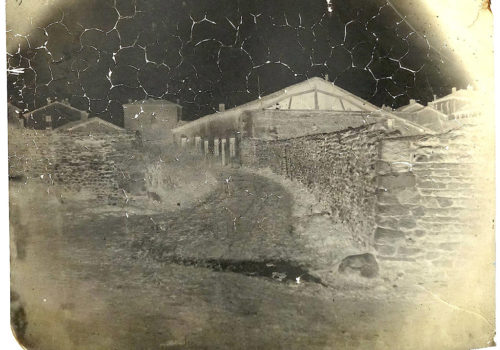After sime years as a young lawyer in Roanne, he soon become banker in Charlieu.
Passionate about art history and local history, archeology, sigillography, heraldry, he is also a chemist in his spare time and is interested in the new invention that allows to inventory and to reproduce: photography.
Fascinated by the work of Gustave Le Gray, who published his method on dry waxed paper in 1850, Stéphane Geoffray start to study and experiment with wax and especially one of its components, the céroléine, which has the property of making translucent the paper: these are then his first test in photography. March 24, 1854, he sent an article to the journal Cosmos: New method for wet or dry paper.
Gustave Le Gray recognized the value of the method in La Lumière (article of 24 June 1854). In May 1855 Geoffray published his Treatise for the use of commercial papers in photography.
St. Fortunatus’ Abbey, located at Charlieu, Loire, Burgundy, France (population: 3500), was a Benedictine abbey, and later a Cluniac priory.
The monastery, dedicated to Saint Fortunatus, was founded in 872, in this region of southern Burgundy known as the Forez. Its patrons were Ratbertus, bishop of Valence, and his brother Edward, in a place they called Carus Locus (“dear place”),] and dedicated to Saint Stephen and Saint Fortunatus. The abbey was placed under the direct control of the Holy See.
The tradition that the abbey church and other structures at the site were erected by Gausmar, the first abbot, and his monks with their own hands is belied by the fine and professional character of the masonry uncovered when remains of the foundations of the Carolingian abbey were uncovered at the site in 1927. Its roof was wooden, for no foundations for interior supporting piers were found.
By 926 the abbey was important enough to be the seat of a synod.
The Benedictine community at Charlieu was annexed by the Cluniac movement in 932, one of Cluny’s earliest acquisitions and always among the first mentioned in any list of Cluniac houses, the abbey church was consecrated in 1094. A narthex was added in the 12th century.
The community of Charlieu refused the Cluniac reforms of the seventeenth century, and on 19 March 1787, letters patent suppressed the abbey. On 9 September 1792 a Revolutionary mob broke into the abbey’s muniments room and made a bonfire of all its records.
















